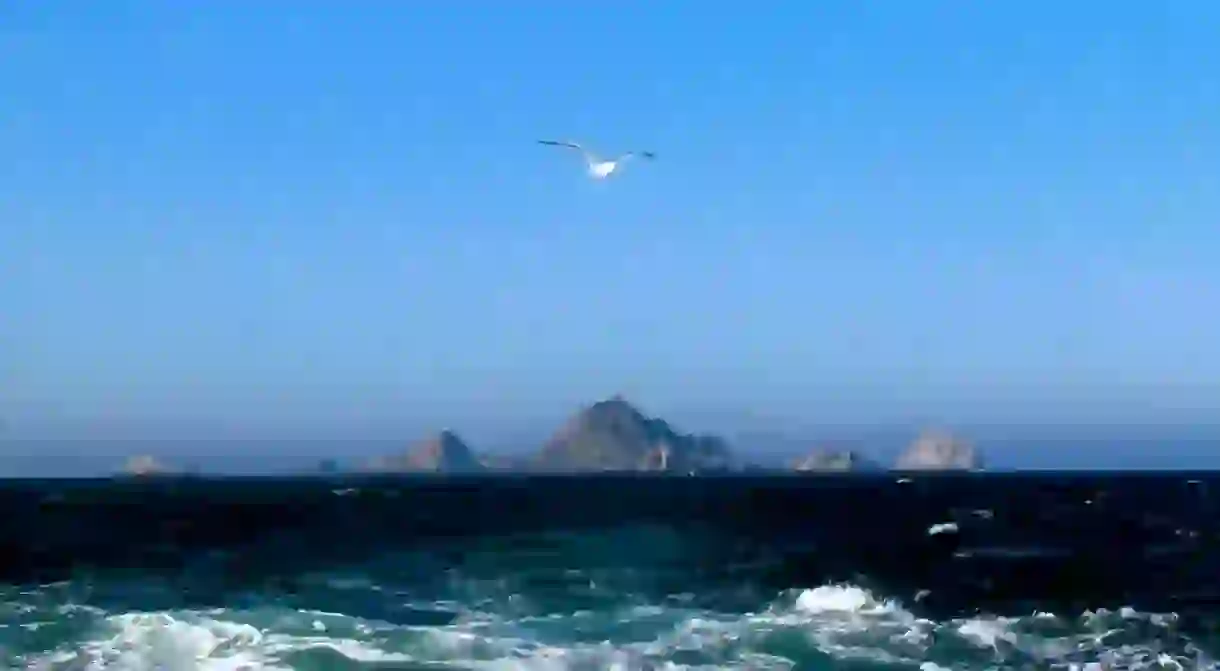A Guide To The Farallon Islands: San Francisco's Secret Wildlife Refuge

Unbeknownst to most San Franciscans, just 30 miles off their city’s west coast sits a set of small islands filled with thriving wildlife. The Farallon Islands have stood the test of time, surviving through centuries of sharks, shipwrecks, and even nuclear waste. Almost entirely isolated from human life, the Farallon Islands have been named a National Wildlife Refuge, protecting them as a safe home for the many sea-friendly animals that inhabit them.

The islands have long held a dangerous and mysterious air about them, referred to as ‘islands of the dead’ by early Native Americans and ‘the devil’s teeth’ by 1850s soldiers. Many ships met their destruction on the Farallon shores, like the SS Henry Bergh and the USS Conestoga, some remains of which can still be seen there. This dangerous aura was only amplified in the mid 1900s, when the waters surrounding the islands were used for dumping nuclear and radioactive waste. A staggering 47,500 steel drums, each containing 55 gallons of waste, were disposed of in the Gulf of Farallones between 1946 and 1970.

Although the Farallon Islands are technically part of the city of San Francisco today, the public has been forbidden to visit them since they became a National Wildlife Refuge in 1969. Of the total 141 acres included within the refuge, only a very small section is inhabited by people – namely, researchers from Point Blue Conservation Science and the U.S. Fish and Wildlife Service. On the Farallon Islands, instead of people, you will find a thriving community of animals.

The islands are home to the largest colony of nesting seabirds in the United States, including over 400 species like double-crested cormorants, red-necked phalaropes, and common murres. After suffering huge population depletions due to the fur trade in the early 1800s, five species of seals and sea lions are now thriving on the islands’ shores, including the northern elephant seal, harbor seal, Steller’s sea lion, California sea lion, and the northern fur seal. These pinnipeds draw a population of great white sharks, who feed on them, and there are also several species of whales that can be found in the Gulf, including gray whales, blue whales, humpback whales, and killer whales. Additionally, USA Today has called the island the ‘world’s most rodent-packed island,’ featuring about 60,000 mice (a fact which likely makes people glad to know they can’t visit the island).

Although the islands are closed to public visitation, interested locals can take boat tours through the nearby waters. These tours are run by San Francisco Whale Tours and led by naturalists – but they are not recommended for those who cannot handle the turbulent waves, freezing cold, and soaking sea spray. As an alternative, you can get a glimpse of the refuge from the comfort of your own couch by watching the Farallon Islands Live Webcam put on by the California Academy of Sciences.













